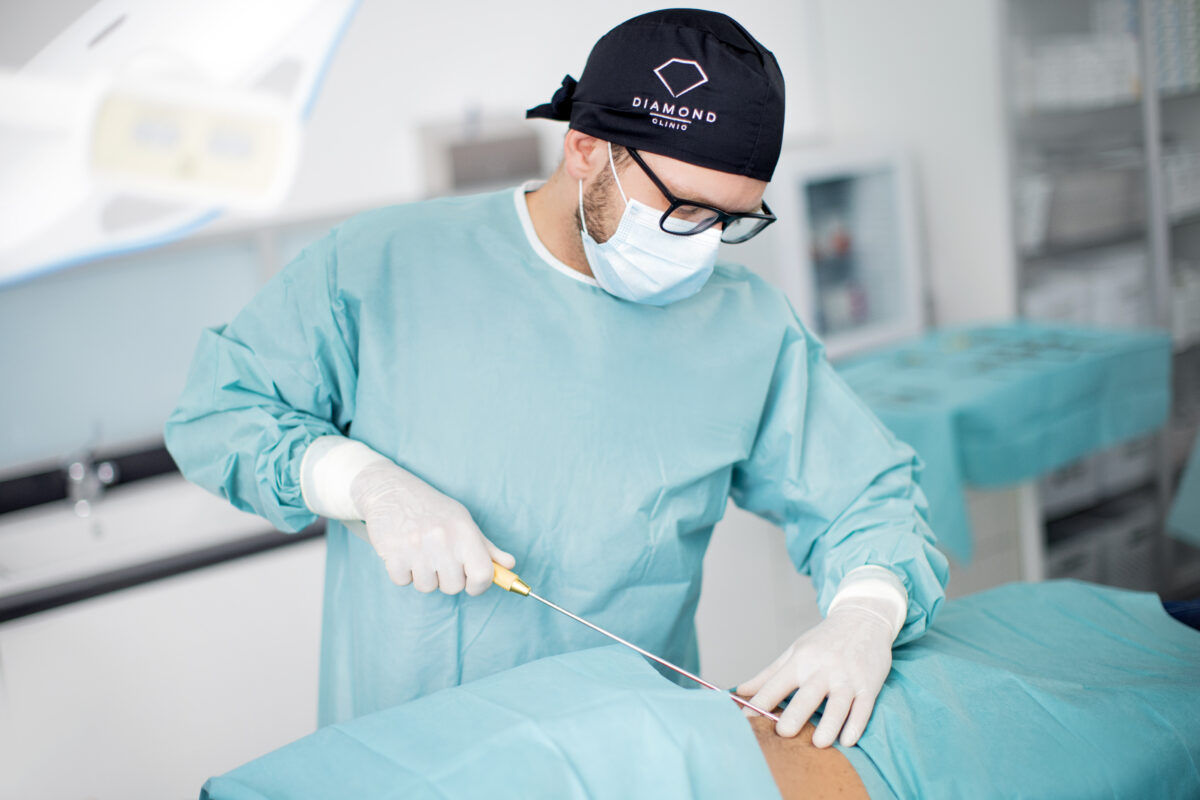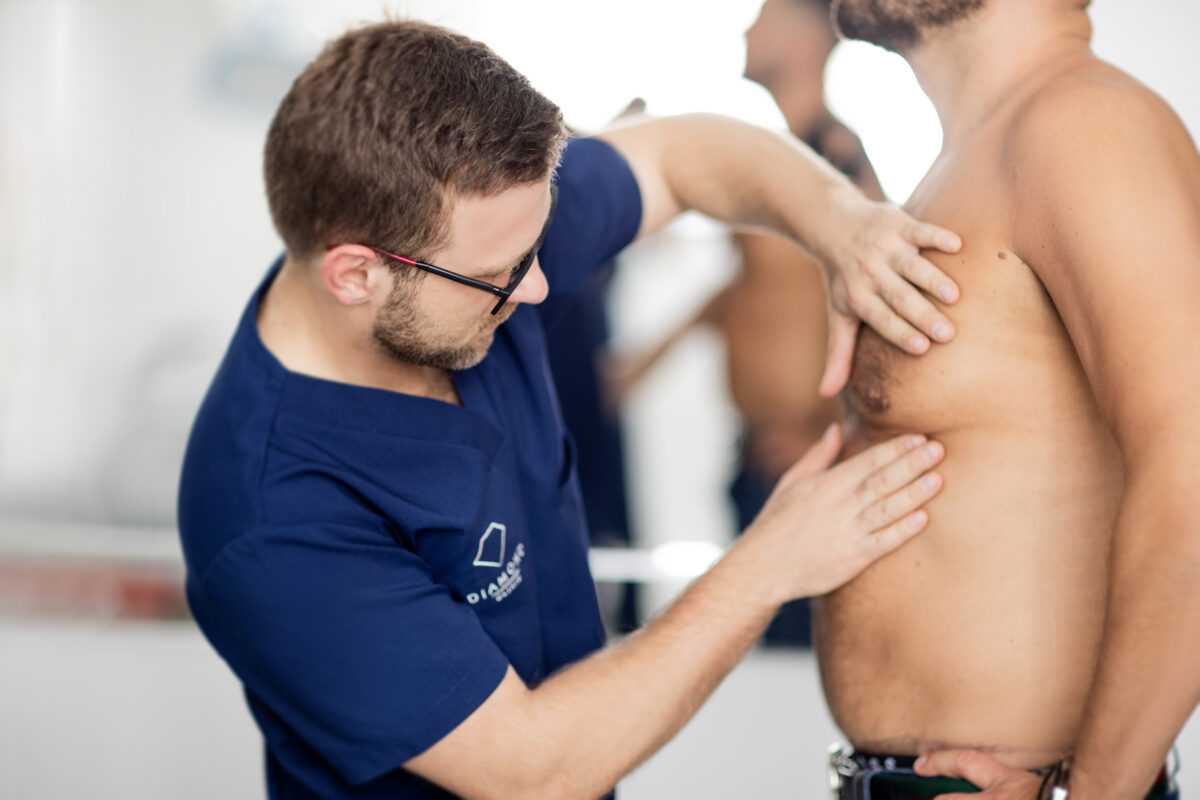Cosmetic surgery
WHAT DOES ABDOMINAL PLASTIC SURGERY (ABDOMINOPLASTY) INVOLVE?
Abdominoplasty is a procedure designed to address the problem of excess skin on the abdomen along with fat reduction and muscle enhancement. Abdominoplasty is particularly recommended for people who, despite a healthy lifestyle and a well-balanced diet, struggle with unethical loose skin on the abdomen. This condition most often affects women after pregnancy and those who have lost weight in a short period of time. Abdominal plastic surgery is a procedure performed by a plastic surgeon.
HOW DOES THE PROCEDURE WORK?
Abdominoplasty is performed under general anaesthesia. Before the operation, a drawing is made below the underwear line, marking the incision lines and providing landmarks during the operation. The surgical incision runs horizontally above the interpubic joint from one iliac spine to the other, making the scar easy to hide under underwear. In addition, the abdominal skin is incised around the navel. The skin is then separated from the abdominal wall in the space from the interpubic conjunctiva to the rib arches and lifted upwards. This allows the doctor to pull towards each other (inwards) and suture the fascia covering the two large, vertically located muscles (rectus abdominis muscles) that form the central part of the abdominal wall. During the procedure, excess skin and fatty tissue are removed and the navel is repositioned in its new location. In people who have had a separation of the abdominal muscles (so-called white line hernia) as a result of pregnancy, suturing and muscle strengthening is additionally performed. By removing the excess skin, the appearance of the abdominal layers is significantly improved. A firmer abdomen with a visibly defined waist is observed.
HOW TO PREPARE FOR THE PROCEDURE?
Abdominal plastic surgery is a major surgical intervention performed under general anaesthesia, requiring a number of criteria to be met and restrictions to be complianced.
Prior to abdominal plastic surgery you must:
- A minimum of four weeks before the date of the scheduled surgery, limit or stop smoking cigarettes.
- Two weeks before the operation, no aspirin or aspirin derivatives may be taken.
- The patient should inform the doctor of any medication he or she is taking or has recently taken, as well as of any allergies, if any.
- On the morning of the treatment, it is recommended to take a bath under running water with antiseptic soap.
- Patients will receive a full pre-operative advice sheet needed at the surgery qualification stage when they book their surgery date. The doctor will also depute patients for blood tests (including blood count, clotting times, blood group, Hbs antigen, anti-HCV) and other additional tests, e.g. ECG, chest X-ray or abdominal ultrasound.
WHAT IS THE CONVALESCENCE LIKE AFTER THE PROCEDURE?
Abdominal plasty is a highly intrusive procedure and it is therefore important to follow post-operative instructions.
The recovery period lasts approximately 6 weeks and depends on the patient’s general state of health. During the first few days after the abdominal plasty procedure, the patient cannot straighten up completely but must remain in a slightly bent position. There may be slight swelling in the treatment area and redness or bruising. All these side effects usually disappear spontaneously after few days. The patient may experience moderate discomfort after abdominal plasty, so painkillers may be taken for 2-5 days after the operation.
After abdominal plasty, you should refrain from drinking alcohol and smoking cigarettes. You should refrain from participating in sports for 2 weeks.
After the abdominal plasty operation, the dressing will be removed on day 1 or 2, the removal of the stitches takes place approximately 10-14 days after the operation.
Abdominoplasty – Tummy tuck
- Excess sagging skin in the abdominal area caused by rapid weight loss;
- post-pregnancy abdomen: flabby straight abdominal muscles, stretch marks, loose skin in the abdominal area;
- abdominal hernia;
- health considerations: excess skin can cause strain and associated back pain or joint degeneration.
- improvement of the appearance, shape of the abdomen, slimming of the waist;
- removal of excess skin in the lower abdominal area, stretch marks of the abdominal skin;
- restoration of the natural appearance of the navel;
- improvement in self-esteem.






